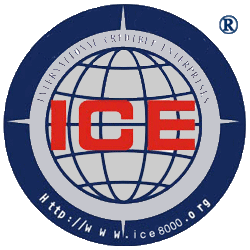Analysis of Corporate Governance Structure, System and Culture-World Credit Organization
3.6 Corporate governance structure, system and culture analysis
In the long run, the competition of enterprises is the competition of enterprise system and culture. Whether the enterprise system and culture are superior is the guarantee for the everlasting success of an enterprise.
3.6.1 Analysis of corporate governance structure
1. The concept of corporate governance
Corporate governance, also known as corporate governance or corporate governance or organizational governance, can be understood in the following three ways:
1. Corporate governance refers to the company's shareholders' meeting, board of directors, board of supervisors, and managers exercising the rights of a legal person and assuming responsibilities and obligations in accordance with the articles of association or contract.
2. In the narrow sense, corporate governance mainly refers to the relationship between shareholders, directors, supervisors and managers within the company.
3. In a broad sense, corporate governance also includes the relationship with stakeholders (such as employees, customers, the public, etc.).
2. The concept of corporate governance structure and corporate governance system
The legal person governance structure is the organizational structure of the legal person, that is, the relationship between the company's shareholders meeting, board of directors, board of supervisors and managers. The corporate governance structure is generally determined by law (such as the company law), the company's articles of association, or related contracts. The corporate governance structure also belongs to institutional norms, and it is the most fundamental system of a company.
The legal person governance system is the system for operating and perfecting the corporate governance structure. In order to ensure that ICE8000 honest enterprises establish a sound legal person governance structure, the ICE8000 system requires them to establish a legal person governance system.
Third, the components of corporate governance structure
According to the provisions of the company law of our country, the corporate governance structure of the company consists of four parts:
1. The shareholders' meeting or general meeting of shareholders is composed of shareholders of the company, which reflects the owner's ultimate ownership of the company;
2. The board of directors, elected by the company's general meeting of shareholders, makes decisions on the company's development goals and major business activities, and safeguards the rights and interests of investors;
3. The board of supervisors is the company's supervisory body, which plays a supervisory role in the company's finances and the behavior of directors and operators;
4. Manager, appointed by the board of directors, is the operator and executor.
Fourth, the establishment of corporate governance structure should follow the principles
The principles that should be followed in establishing the corporate governance structure are:
1. The principle of clear responsibilities
The various components of the corporate governance structure of the company should have a clear division of labor. On this basis, each should perform its duties and assume its own responsibilities, so as to avoid confusion caused by unclear responsibilities and division of labor, which will affect the normal performance of duties of each part. the entire function.
2. The principle of coordinated operation
The various components of the company's corporate governance structure are closely integrated and run together. Only by coordinating and cooperating with each other can they operate efficiently and effectively manage the company.
3. The principle of effective checks and balances
The various parts of the company's corporate governance structure must not only coordinate and cooperate, but also effectively achieve checks and balances, including checks and balances between different levels of institutions and checks and balances between different stakeholders.
V. The role of corporate governance structure
Corporate governance structure can solve three basic problems related to the success or failure of enterprises.
1. How to ensure the return on investment of investors (shareholders), that is, to coordinate the interests of shareholders and enterprises.
In the case of separation of ownership and management rights, due to the dispersion of equity, shareholders may lose control, and the enterprise is controlled by insiders (ie managers). At this time, the insiders who control the enterprise may make decisions that violate the interests of shareholders and violate the interests of shareholders. This situation will cause investors to be reluctant to invest or shareholders to "vote with their feet", which will damage the long-term development of the enterprise. The corporate governance structure is precisely to ensure the control and interests of the owners (shareholders) from the system, so that investors are willing to support and help the development of enterprises.
2. How to coordinate the relationship among various interest groups within the enterprise.
Generally speaking, enterprises have the following interest groups: shareholders, directors, supervisors, chairman, managers, deputy managers, middle-level personnel, and ordinary employees. Different interest groups have different interest demands. How to turn these interest demands into a positive impetus rather than a reverse impetus for the development of the enterprise is not enough to rely solely on the personal qualities or personal charm of some people or leaders. It needs to be perfected. The governance structure allows various interest groups to claim and obtain legitimate rights and interests according to game standards.
3. How to resolve or deal with bad external pressure.
Enterprises (especially those in countries with an unsound legal environment) sometimes face adverse external pressures. If they are not handled properly, it will bring adverse effects to the enterprise. For example: Under the pressure of government leaders, a company merged with another local company, resulting in long-term losses after the merger. Under the pressure of government leaders, a certain company sponsored a huge amount of money for a local image project. In some enterprises with a relatively sound corporate governance structure, the board of directors takes back the decision-making power on such issues. When the general manager faces pressure from government leaders, he resolves the relevant pressure on the grounds that he has no right to make decisions or the board of directors has not voted through.
6. The risk of lack of legal person governance structure
The relevant content of the corporate governance structure of our country's company law is very good. It has almost transplanted all the modern corporate governance structures from the West. corresponding risk. However, most businesses do not operate under company law. Although it is understood from the articles of association that the enterprise has a legal person governance structure, the system on paper does not actually operate. For the time being, we call this type of enterprise: an enterprise lacking a corporate governance structure, or an enterprise lacking a corporate governance structure.
The risk of lack of corporate governance structure is that the interests of corporate shareholders, directors, supervisors, chairman, managers, deputy managers, middle-level personnel, and ordinary employees cannot coordinate the interests of various interest groups, which often cause civil strife.
Why do some companies lack corporate governance structures but still be successful? The reason is: the core leaders of the enterprise have good interpersonal relationships (such as kinship and friendship) with the spokespersons of interest groups such as directors, supervisors, and senior personnel of the enterprise. This kind of good interpersonal relationship and the resulting balanced state have well coordinated the interests of various interest groups.
However, in the long run, interpersonal relationships cannot replace the corporate governance structure, and the balance of interpersonal relationships will change due to factors such as the death of core leaders or related personnel, the sudden emergence of newcomers, and changes in the interests of individual members of the team , eventually leading to civil unrest.
The following phenomena can generally be regarded as the appearance of the lack of corporate governance structure:
1. The chairman exceeds his authority to interfere with the general manager's affairs, and the general manager exceeds his authority to decide the board of directors affairs;
2. The chairman and the general manager are the same person;
3. Offside or absence of duties of directors, supervisors, and general manager;
4. The meeting of the board of directors and the general manager will be held together;
5. The board of directors, board of supervisors or shareholder meeting has not been held for a long time;
6. Directors or supervisors or the general manager or chairman do not know the limits of their powers and responsibilities;
7. There is no resolution document of the board of directors or the board of supervisors;
8. Abnormal resignation of directors, supervisors and senior executives;
9. Shareholders complain to the media or relevant departments.
3.6.2 Institutional and cultural analysis
1. Whether the enterprise has passed the ISO9000 quality management system certification
Units that have passed the ISO9000 quality management system certification show to a certain extent that their production procedures are relatively scientific, their product quality is relatively reliable, and their ability to perform contracts is strong.
2. Whether the enterprise has implemented ICE8000 integrity management
Enterprises that implement ICE8000 integrity management have established the following necessary systems, and have a strong ability to perform contracts and a strong willingness to be honest.
1. Analysis of corporate culture
By reading the corporate culture manual, you can understand the nine cultural elements such as the mission, values, and vision of the company. The higher the corporate mission, the better the development trend of the company's ability to perform contracts and the willingness to be honest; the more the corporate values are in line with the universal values of human beings , the better the development trend of the enterprise's performance ability and honesty will; the more perfect the nine cultural elements of the enterprise are, it means that the more in-depth the construction of corporate culture is, the better the development trend of the enterprise's performance ability and honesty will be.
2. Risk prevention system for enterprise employees
The incompetence of individual employees or lack of professional ethics, as well as the loss of talents, are one of the important risks faced by the enterprise. The more perfect the risk prevention system for people, the better the development trend of the enterprise's ability to perform contracts and its willingness to be honest.
3. Enterprise system risk prevention system
Enterprises will have the risk of missing, excessive, and inappropriate systems. Therefore, it is very important whether the company has established a regular or irregular system update mechanism.
Third, the resignation of enterprise management personnel
If there are many resignations of corporate managers, especially high-level personnel, it may indicate that the corporate system and corporate culture have not yet been established or have not yet stabilized.
Fourth, frequent accidents
If accidents occur frequently, it may indicate that the corporate system and corporate culture have not yet been established or are not yet stable or are not suitable for the development needs of the company.
The above content is excerpted from "ICE8000 Credit Investigation, Analysis, and Rating" (written by Fang Bangjian, free to use, but please indicate the source)


